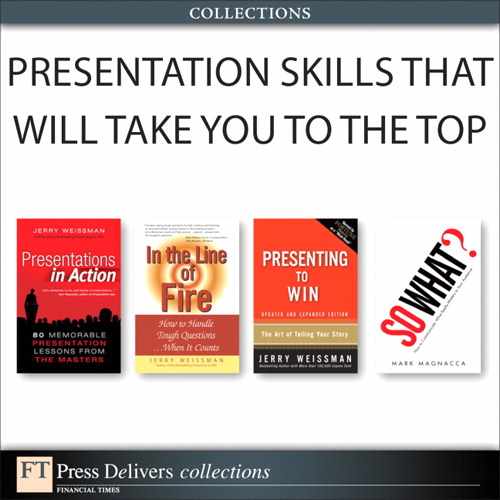41. Presentation Advice from Edward R. Murrow: The “Person-to-Person” Role Model
Edward R. Murrow, the celebrated broadcast journalist, had a distinguished career at CBS that started in the early days of radio in 1935 and culminated in the golden age of television in 1961. George Clooney’s 2005 film Good Night, and Good Luck brought the man and his era back to the forefront of public consciousness, but I didn’t need any reminders. My own career at CBS began after Mr. Murrow had left, but his legend was still reverberating throughout the studios and control rooms of the Broadcast Center on 57th Street in New York when I got there.
One of Mr. Murrow’s major assignments was as the host of a television series called Person to Person. Every Friday night for eight years, he sat in a studio in Manhattan and engaged in casual conversation with a different celebrity. But their conversations were only virtual; the celebrities were in their own homes at remote locations. Their images were transmitted over coaxial cables and composited with that of Mr. Murrow using a then-novel technology called chroma-key. His talent was to bridge all the technology and make all the conversations natural.
As a staff producer of unsponsored public affairs programs at the local station, I didn’t have quite Mr. Murrow’s network clout or his advertisers’ dollars, but we did use the same staple television format: the talk show. With our meager budget, all the participants were in the same studio, but the format provided an important benefit.
None of the guests on our public affairs programs—who came from the business, government, academic, and scientific sectors—was a professional performer. My job was to help make those men and women feel comfortable and look comfortable in the highly stressful circumstances of appearing on camera. To do this, we leveraged the talk show format. We structured our programs as conversations, as either person-to-person interviews or small group discussions conducted by professional moderators. By putting our nonprofessional guests into familiar settings, we reduced their stress levels. (Of course, once we got our guests to feel comfortable, we made them feel uncomfortable by having our moderators ask tough questions. But that is another subject for the next Section, “Q&A: Handling Tough Questions.”)
Years later, when I left television and became a speaking coach, I wound up with essentially the same client base as I’d had in public affairs television. So I used the same approach in business—treating presentations as person-to-person conversations—and produced the same calming results as I did in television. In doing so, I was able to help alleviate one of the most common apprehensions known to humankind: the fear of public speaking.
Although I never had the privilege of meeting Edward R. Murrow, his legacy extended, over the coaxial cables of time, to inform and inspire the Power Presentations methodology.
